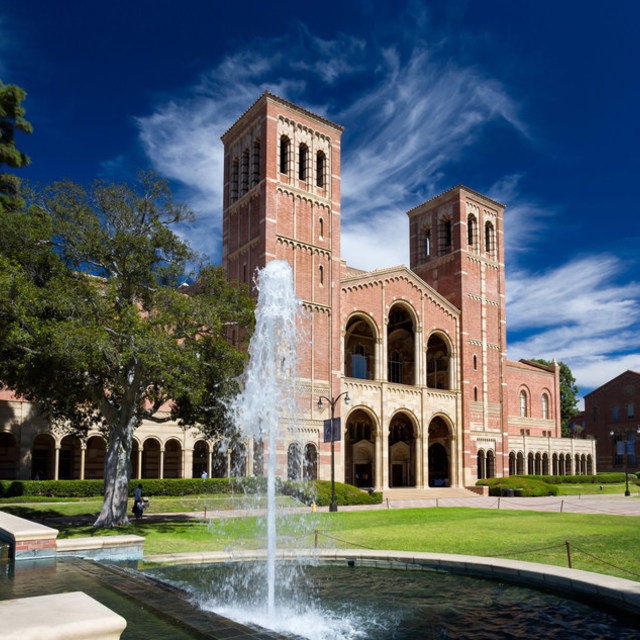Published on Thursday, November 20, 2025
Access our latest property investment summary by completing the form below.

Stanford, UCLA, UC-San Diego and San Diego State are demonstrating resiliency.
University-anchored innovation districts are accelerating economic growth in 18 California campus areas, demonstrating superior office and retail performance, robust talent pipelines and powerful investment ecosystems, according to a new report from JLL.
The Stanford Research Park, UCLA Innovation Park, UC San Diego’s (UCSD) Science Research Park and San Diego State’s Mission Valley Innovation District are among 18 college markets featured in the study that have proven most resilient and promising, delivering higher rents and occupancies than proximate office and retail markets.
Office assets in university-anchored innovation districts command a 10% rent premium and maintain vacancy rates that are 220 basis points lower when compared to the national average, according to JLL. Mature innovation districts do even better, driving a 36% premium on direct asking rents compared to national averages.
These districts outperform within their local markets, boasting a 26% office premium and vacancy rates 290 basis points lower than those in surrounding submarkets.
JLL also found that the proper retail merchandising mix can “create a vibrancy that enhances the collaborative spirit of these places."
Its analysis determined that retail is thriving in these innovation districts, with the sector’s rents commanding 28% more than those in nearby submarkets, supported by dense, walkable developments that attract students, faculty-specialized workers and the broader community.
Taking a Look at Key University Centers
Stanford Research Park is the foundation of the innovation ecosystem in California, based on its top research universities that can attract top talent from around the world and deploy new ideas that change everyday life.
Stanford Research Park remains the epicenter of Silicon Valley’s research and development market, now at the forefront of artificial intelligence, autonomous vehicles, robotics, semiconductors and bioscience. It’s also not surprising that the SRP commands some of the highest rents in the region, with a total availability rate of 13% compared to the market-wide average availability rate of 15%.
This is based on combining all land used in the park as a weighted average.
The UCLA Innovation Park will occupy roughly 700,000 square feet of what was once a sprawling, popular retail mall. Completion is expected in phases through 2027 and beyond.
The site is located two miles from the main Westwood campus. It will be home to the California Institute for Immunology and Immunotherapy at UCLA, as well as the UCLA Center for Quantum Science and Engineering.
UCSD’s Science Research Park is a 23-acre hub for corporate-academic collaboration, advancing research, commercialization and student development. With a focus on life sciences and technology, the park is set to become Southern California’s epicenter for innovation, attracting new partners and ideas to the region.
The SDSU Mission Valley Innovation District is a transformative mixed-use development featuring research, office, technology and laboratory space for leasing within a 1.6 million-square-foot master-planned district.
Located adjacent to Snapdragon Stadium, phase 1 of the Innovation District totals 350,000 square feet and includes two primary buildings (193,455 square feet and 130,455 square feet) and an amenity pavilion (26,908 square feet).
It is designed to foster innovation and scalability by offering flexible tenant suite sizes starting at 5,000 square feet, complemented by premium amenities such as outdoor balconies with stadium views, a fitness and wellness center, conference facilities and a rooftop event space.
The whole master plan will include 4,600 residential units, 95,000 square feet of retail, 80 acres of parks and open space and an integrated trolley stop.
Leveraging SDSU’s R1 research designation and an alumni network of 500,000 square feet, more than half of whom reside in the San Diego region, the innovation district creates a collaborative ecosystem that fosters deep university-industry partnerships – an initiative projected to generate $3 billion in annual economic impact at full build-out.
Fostering Economic Growth Takes Time
The first wave of university-anchored innovation districts was in the 1950s/1960s (Stanford Research Park was founded in 1951).
“Fostering the growth of such economic development engines takes time,” Emily Crutcher, senior vice president for JLL's government and education division, told GlobeSt.com.
“University-anchored innovation districts may take decades to cultivate and grow, which requires committed university leadership across multiple administrations, the support of local, state, and federal agencies, partnerships with corporations, exposure to VC networks, programs with local community colleges, and more.”
While advancements in robotics, AI and quantum computing are having an unprecedented impact on the way scientific experiments are conducted, research still requires highly collaborative environments and the use of specialized equipment, Crutcher said.
“Therefore the ‘purpose of place’ – meaning a built environment designed to support collaboration, amenitization, and activation – remains critical to the growth of innovation ecosystems,” Crutcher said.
Therefore, while these districts typically combine research facilities, startup incubators, corporate R&D centers and entrepreneurial support services – it is just as crucial that the districts foster a vibrant mixed-use development. This includes having restaurants, cafes, food halls and shops activating the ground floor, with hotels catering to visiting researchers or entrepreneurs, residential typologies supporting community and recreational amenities to create an engaging environment.
“University-anchored innovation districts are most successful when leadership decides that these places must be an economic development engine for the entire community,” Crutcher said.
“Those university-anchored innovation districts that actively work to strengthen not just the university research pathways, but the commercialization pathways (from the start-ups/spinouts to training/certification programs for advanced manufacturing) will find more broad-based support.”
In 2023, federal agencies funded approximately half of higher education research and development (R&D), with additional support from states, nonprofits and the private sector.
Venture capital flows are markedly concentrated in these districts; cumulative early-stage VC investments in major university-anchored metros exceeded $180 billion since 2015, powering a virtuous cycle of academic research, commercialization and enterprise formation.